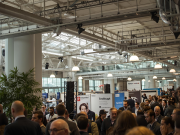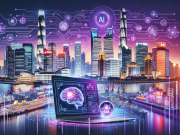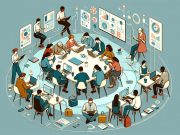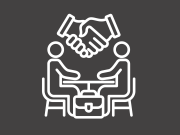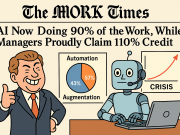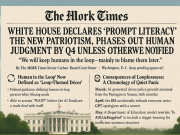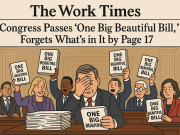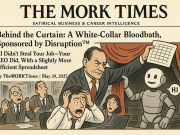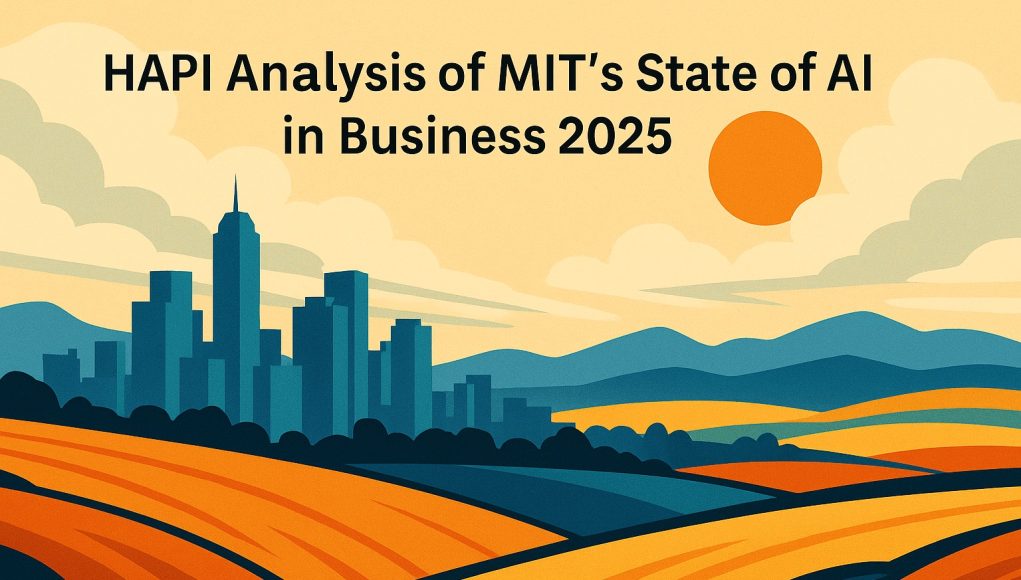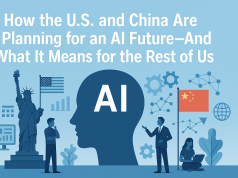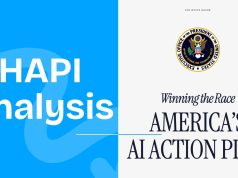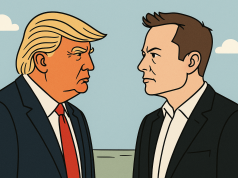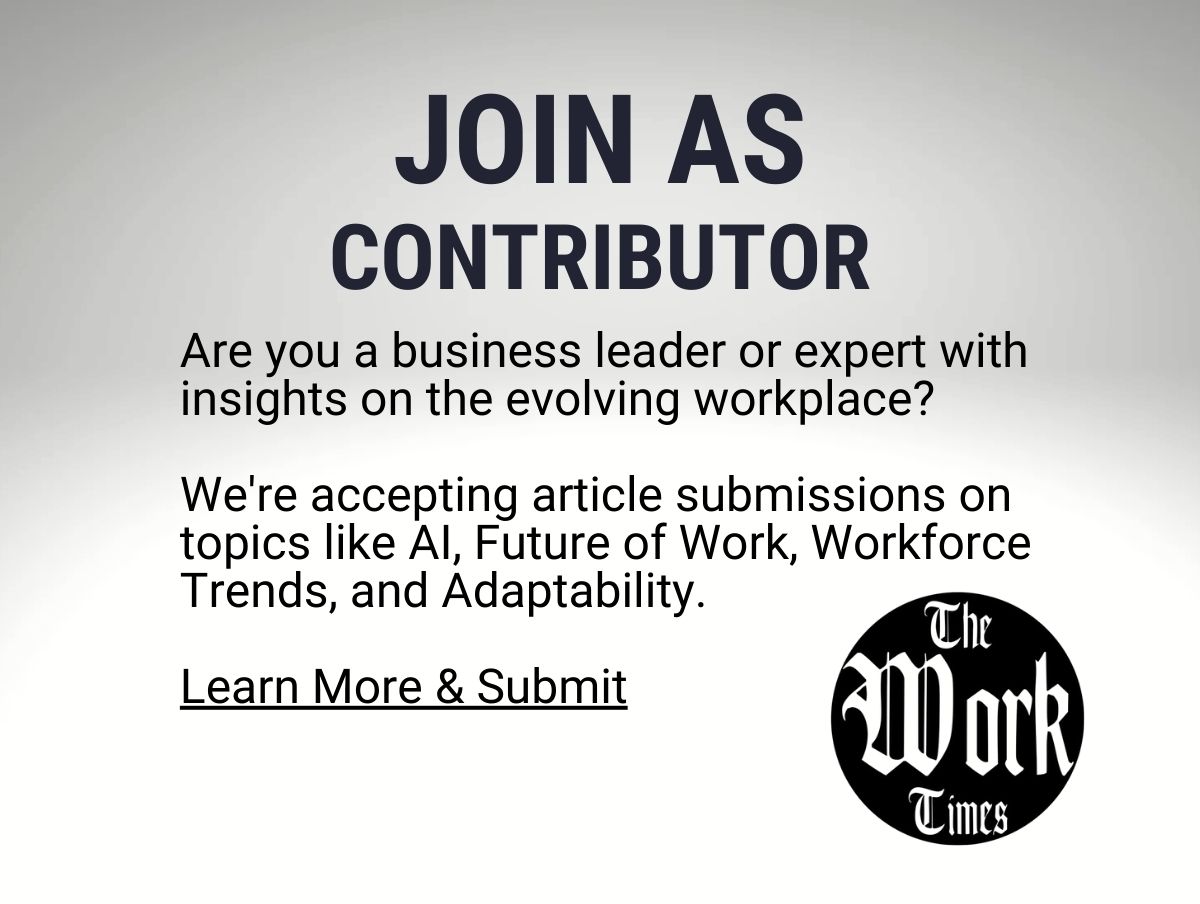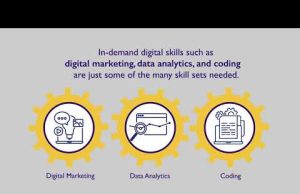In every era of technological upheaval, there is a curious pattern: tools arrive with the promise of revolution, but transformation lags behind. The printing press did not immediately democratize knowledge—it took centuries of religious wars, rebellious pamphleteers, and coffeehouse debates before it reshaped society. The steam engine did not instantly create modern industry—it required new ways of organizing factories, labor, and supply chains. And now, artificial intelligence stands before us with the same paradox. The tools are dazzling, adoption is rampant, and yet—if MIT’s State of AI in Business 2025 is to be believed—transformation is barely visible. Companies are spending billions, but workflows remain unchanged, industries remain stable, and executives mutter that “nothing fundamental has shifted.” What we face is not a crisis of access to AI, but a crisis of adaptability. The GenAI Divide, as MIT calls it, is not about who has AI and who does not; it is about who can learn, change, and grow with it. This is where the Human Adaptability and Potential Index (HAPI) offers a crucial lens: a framework not just to measure the gap, but to show us how to cross it.
The GenAI Divide — Why Adoption Isn’t Transformation
In 1854, a London physician named John Snow mapped the outbreak of a cholera epidemic and traced it to a single water pump on Broad Street. At the time, the prevailing wisdom held that “miasma”—bad air—was to blame. Snow’s insight wasn’t about having access to better data; it was about reframing the problem. He saw what others could not: the map was only useful if you learned to read it differently.
MIT’s State of AI in Business 2025 lands us in a similar moment. Companies have the maps—ChatGPT, Copilot, enterprise AI systems—but few are learning to read them in ways that transform the terrain. The report’s central revelation is stark: despite $30 to $40 billion in enterprise investment in generative AI, 95 percent of organizations have seen no measurable return.
The researchers call this rift the GenAI Divide. It is not a divide between the haves and the have-nots, nor between those with access to cutting-edge models and those without. Instead, it separates organizations that have adopted AI tools superficially from those that have managed to integrate them deeply enough to alter their business DNA. Adoption is everywhere; transformation is rare.
The Mirage of Adoption
The figures are impressive at first glance. More than 80 percent of organizations have experimented with tools like ChatGPT, and nearly 40 percent have moved toward deployment. Yet most of these deployments enhance only individual productivity—emails drafted faster, presentations polished more quickly—without shifting the economics of the enterprise.
Enterprise-grade systems, meanwhile, fare even worse. Roughly 60 percent of firms have evaluated them, but only 20 percent reached the pilot stage, and a mere 5 percent survived long enough to scale into production. The problem isn’t the sophistication of the underlying models or regulatory red tape. The problem, MIT concludes, is that these systems simply don’t learn. They fail to retain feedback, adapt to context, or integrate with the idiosyncrasies of real workflows.
It is the corporate equivalent of hiring an eager intern who shows promise on day one but forgets everything by day two.
A Divide in Industries
If generative AI were a true general-purpose technology—as transformative as electricity or the internet—we might expect seismic shifts across industries. But MIT’s AI Market Disruption Index tells a humbler story. Out of nine major sectors, only two—Technology and Media—show clear signs of disruption. The rest—finance, healthcare, manufacturing, energy, and beyond—remain remarkably stable.
The COO of a mid-market manufacturer summarized the prevailing mood with blunt honesty: “The hype on LinkedIn says everything has changed, but in our operations, nothing fundamental has shifted. We’re processing some contracts faster, but that’s all.”
In other words: a LinkedIn newsfeed brimming with AI revolutions, and a shop floor where it’s Tuesday as usual.
The Pilot-to-Production Chasm
The most damning finding may be what MIT calls the pilot-to-production chasm. While consumer-facing tools like ChatGPT boast high rates of adoption, enterprise tools collapse between experimentation and scale.
Large enterprises, flush with budgets and teams, run more pilots than anyone else. But paradoxically, they are the least likely to scale those pilots into production. Mid-market companies, by contrast, move with agility—often leaping from pilot to deployment within 90 days. For enterprises, the same journey stretches to nine months or more, during which enthusiasm evaporates, champions rotate out, and the tools themselves fall out of sync with the business.
As one CIO confessed: “We’ve seen dozens of demos this year. Maybe one or two are genuinely useful. The rest are wrappers or science projects.”
The image is familiar: a field strewn with the corpses of half-finished experiments, victims not of ambition but of inertia.
The Shadow AI Economy
And yet, away from boardrooms and procurement offices, something remarkable is happening. Workers themselves are already crossing the GenAI Divide.
MIT describes a thriving shadow AI economy, where employees use personal ChatGPT accounts, Claude subscriptions, and other consumer tools to automate large portions of their jobs. While only 40 percent of firms purchased official AI licenses, 90 percent of workers in surveyed companies reported using personal tools daily for work tasks.
The irony is sharp. While executives agonize over procurement strategies and compliance, employees are quietly reaping real productivity gains—writing drafts, automating outreach, summarizing calls. The tools are unapproved, unofficial, and undeniably effective.
This shadow economy reveals a simple truth: adaptability is already reshaping work, but not through the sanctioned channels of enterprise IT. In some cases, the future of work is arriving from the bottom up, one personal subscription at a time.
The Real Barrier: Learning
MIT’s conclusion is unsparing. The obstacle is not regulation, not infrastructure, not even talent. The obstacle is learning.
- AI tools don’t retain feedback.
- They don’t adapt to evolving workflows.
- They don’t remember context.
And when tools fail to learn, organizations fail to transform. Employees notice. They use ChatGPT for brainstorming or quick drafts but abandon it for high-stakes work because it forgets client preferences, repeats mistakes, and demands endless re-prompting.
The line that echoes through the report is simple and devastating:
“The core barrier to scaling is not infrastructure, regulation, or talent. It is learning.”
The Divide, in Human Terms
So here we are: a business landscape where AI is everywhere and nowhere at once. Where employees experiment daily, but enterprises hesitate to follow. Where $40 billion in investment buys little more than dashboards and demos.
The GenAI Divide is not technological. It is cultural, behavioral, and above all, adaptive. Enterprises are failing to cross not because they lack resources, but because they lack the capacity to learn in the way their employees already are.
In the next part, we will apply the Human Adaptability and Potential Index (HAPI) to MIT’s findings. If MIT diagnosed the illness—the inability to learn—HAPI offers a way to measure adaptability itself. It tells us who has the capacity to thrive amid disruption, who is stuck clinging to outdated maps, and what it might take to bridge the divide.
Adaptability as the Missing Currency — A HAPI Reading of MIT’s AI Report
When Charles Darwin studied the finches of the Galápagos, he realized that survival was not about brute strength but about the ability to adapt. A bird that could tweak its beak to the environment thrived; one that clung to an outdated shape did not.
MIT’s State of AI in Business 2025 reveals a corporate ecosystem where most firms, despite their size and resources, are more like maladapted finches than agile survivors. With $30–40 billion poured into AI and 95% of projects yielding no measurable return, the issue is not access to technology—it is adaptability.
The Human Adaptability and Potential Index (HAPI) provides a lens to evaluate this failure. HAPI measures adaptability across five dimensions—cognitive, emotional, behavioral, social, and growth potential. When we “score” enterprises against MIT’s findings, a portrait emerges: one of organizations rich in ambition but poor in adaptability.
Cognitive Adaptability: Score — 3/10
Enterprises are stuck in old mental models. They adopt AI like one installs a new printer: expecting output without rethinking process. MIT notes that firms eagerly pilot AI tools but fail to redesign workflows around them, leading to stalled adoption.
By contrast, mid-market firms demonstrate high cognitive adaptability, reframing problems quickly and reshaping operations around AI.
Verdict: Cognitive adaptability is the weakest link. Enterprises are “thinking yesterday’s thoughts with tomorrow’s tools.”
Emotional Adaptability: Score — 5/10
MIT uncovers the shadow AI economy: 90% of employees use ChatGPT or Claude daily, often without managerial approval. Workers, in other words, are emotionally adaptable—resilient enough to experiment in uncertain conditions.
Executives, however, show the opposite: skepticism, fatigue, and fear of failure. Their risk aversion stifles experimentation.
Verdict: Employees are a 7/10 in emotional adaptability; leadership drags the average down to 5/10. The crew has learned to sail in storms while the captain clings to the harbor.
Behavioral Adaptability: Score — 4/10
MIT highlights the pilot-to-production chasm. Enterprises take nine months or more to scale pilots; mid-market firms do it in 90 days. Large organizations are locked into rigid behaviors—procurement cycles, governance committees, and “change management” workshops.
Mid-market firms display behavioral adaptability by quickly breaking old habits and embedding new ones into daily work.
Verdict: Enterprises score low (4/10), while mid-market firms shine (8/10). Size correlates with inertia.
Social Adaptability: Score — 6/10
One of MIT’s subtler insights is that external partnerships double the success rate compared to internal builds. Adoption is less about technology and more about trust—referrals, networks, and peer proof matter more than features.
Organizations that collaborate, share learning, and build ecosystems adapt faster. Those that cling to silos stall.
Verdict: Social adaptability scores moderately (6/10). Companies that embrace external networks climb higher, but many remain walled off.
Growth Potential: Score — 7/10
The brightest signal in MIT’s report comes from the bottom up. Employees experimenting with shadow AI show high growth potential—discovering efficiencies, automating tasks, and redesigning work quietly.
Yet organizations often ignore or suppress this energy, treating shadow AI as a compliance risk rather than a growth engine.
Verdict: Workers show strong growth potential (8/10), but organizations underutilize it, dragging the score to 7/10. The future is already here—it’s just happening unofficially.
The HAPI Composite Score: 5/10
- Cognitive: 3/10
- Emotional: 5/10
- Behavioral: 4/10
- Social: 6/10
- Growth Potential: 7/10
Taken together, the HAPI composite score for enterprises sits around 5/10. In other words: average adaptability in a moment that demands extraordinary adaptability.
The HAPI Diagnosis
Through HAPI’s lens, MIT’s GenAI Divide is no mystery:
- Enterprises fail mentally (low cognitive adaptability).
- Workers adapt emotionally but are unsupported.
- Behavior change is sluggish in large firms.
- Trust and ecosystems matter more than features.
- Untapped growth potential lies hidden in shadow AI.
The divide, then, is not a technological one. It is human. Enterprises don’t need more models; they need more adaptability.
Crossing the Divide — How to Maximize HAPI Scores
In 1519, Hernán Cortés landed on the shores of Mexico with a small band of soldiers. Legend has it that he ordered the ships burned behind him, ensuring his men had no choice but to adapt to the unfamiliar terrain. Whether one views him as hero, villain, or opportunist, the lesson is unmistakable: transformation often requires removing the easy path back to old habits.
MIT’s State of AI in Business 2025 paints a world where most enterprises have not burned their ships. They invest billions into AI, but keep the comfort of old workflows, old hierarchies, and old procurement cycles intact. As a result, they remain stranded on the wrong side of the GenAI Divide.
The Human Adaptability and Potential Index (HAPI) reveals a way forward. If organizations scored just 5/10 in adaptability today, the path to a perfect 10 doesn’t require a revolution. It requires small, deliberate acts of adaptation—minimalist changes that compound into systemic transformation.
1. Cognitive Adaptability (Current: 3/10 → Target: 9/10)
The shift: Rethink workflows, not just tools.
A century ago, when electricity arrived in factories, many owners simply swapped out steam engines for electric motors. Productivity gains were modest—until someone reimagined the factory floor itself. Instead of arranging machines around a central shaft, they distributed them flexibly across the space, creating assembly lines. The leap wasn’t in the tool, but in the mental model.
Today, enterprises are repeating the old mistake: layering AI on existing processes without redesign. The minimalistic fix? Make every AI pilot a workflow experiment, not just a software test. Ask: How would this process look if designed around learning, not static steps?
Even modest redesign—embedding AI not as a helper but as a co-pilot in decision loops—can triple the impact of tools already purchased.
2. Emotional Adaptability (Current: 5/10 → Target: 10/10)
The shift: Normalize resilience, reduce fear of failure.
When Apollo 13’s oxygen tank exploded, Gene Kranz and his NASA team faced impossible odds. Yet their mantra became: “Failure is not an option.” Ironically, what saved them was the willingness to fail repeatedly—to try, discard, and improvise fixes with duct tape and slide rules until something worked. Emotional adaptability was the real spacecraft that carried them home.
Enterprises often suffocate AI innovation with fear—compliance worries, reputational risks, “what if it breaks?” thinking. Meanwhile, employees show emotional adaptability in the shadow AI economy, experimenting daily with unapproved tools.
The fix is deceptively simple: sanction experimentation. Create “AI sandboxes” where employees can play without fear of reprisal. Celebrate small failures as learning events. Replace compliance-first culture with resilience-first culture.
Organizations that normalize resilience see morale rise, attrition fall, and innovation accelerate—because employees stop hiding their adaptability.
3. Behavioral Adaptability (Current: 4/10 → Target: 9/10)
The shift: Shorten loops, reward quick adoption.
In 1943, as World War II raged, the U.S. military faced a problem: planes were returning with bullet holes, and engineers wanted to reinforce the most damaged areas. Statistician Abraham Wald reframed the problem. The bullet holes marked where planes survived being hit. The real vulnerability lay in the untouched areas. By changing behavior—reinforcing where holes weren’t—they saved countless pilots.
Enterprises, like those engineers, are solving the wrong problem: investing in more pilots while ignoring the bottleneck between pilot and production. Behavioral adaptability is about shortening the loop.
The fix? Adopt a 90-day rule for AI pilots. If a tool cannot show measurable value in 90 days, pivot or stop. If it does, scale immediately. Reward teams for speed of adoption, not volume of pilots.
This tiny behavioral shift—compressing cycles—lets enterprises act more like mid-market firms, unlocking agility without dismantling bureaucracy.
4. Social Adaptability (Current: 6/10 → Target: 10/10)
The shift: Build ecosystems of trust.
In the 14th century, Venetian merchants thrived not because they had the fastest ships but because they had the deepest trust networks. Through partnerships, shared codes, and guild systems, they reduced uncertainty in long-distance trade.
MIT finds the same dynamic in AI: external partnerships double success rates. Social adaptability—trust, referrals, networks—matters more than feature checklists.
The fix is minimal: shift procurement from demos to references. Before signing a vendor, require proof of trust from peers, not just proof of features. Build AI guilds—networks of firms sharing learnings, risks, and playbooks.
Enterprises don’t need better tools; they need stronger allies.
5. Growth Potential (Current: 7/10 → Target: 10/10)
The shift: Harness the shadow AI economy.
In 1975, Steve Jobs and Steve Wozniak tinkered with circuit boards in a garage, while IBM executives dismissed personal computers as toys. Growth potential often hides in places institutions don’t look.
MIT shows that employees using personal AI subscriptions are already achieving more ROI than official initiatives. The shadow AI economy is not a threat—it is a prototype.
The fix? Formalize shadow AI. Invite employees to demo their personal hacks. Institutionalize the best ones. Subsidize personal AI accounts, then standardize governance around them.
By legitimizing what workers are already doing, enterprises unlock the very growth potential they are currently suppressing.
From 5/10 to 10/10: The Minimalist Revolution
Cognitive adaptability: Redesign workflows, not just pilots. Emotional adaptability: Sanction experimentation. Behavioral adaptability: Shorten cycles to 90 days. Social adaptability: Trust networks over demos. Growth potential: Formalize shadow AI.
None of these changes require billion-dollar investments, sweeping reorganizations, or futuristic breakthroughs. They are minimalistic shifts—changes in posture rather than anatomy—that allow organizations to double their HAPI scores.
Burning the Ships
When Cortés burned his ships, he forced his men to adapt. Today’s enterprises don’t need to torch their IT stacks, but they do need to let go of the illusion that adoption equals transformation. The GenAI Divide is not crossed by budgets or slogans. It is crossed by adaptability.
HAPI gives us the metrics. MIT gives us the warning. The rest is choice.
The organizations that raise their adaptability scores will not just use AI; they will grow with it, shaping industries as electricity once did. Those that don’t? They will remain on the wrong side of the divide, clutching maps they never learned to read.
History does not remember the companies that merely adopted new tools; it remembers the ones that adapted with them. The printing press rewarded those who learned to publish, not those who merely purchased type. Electricity transformed the enterprises that redesigned their workflows, not those who swapped one motor for another. And AI, like every general-purpose technology before it, will not crown the adopters—it will crown the adapters.
MIT’s State of AI in Business 2025 shows us the stark truth: billions spent, but little gained. The Human Adaptability and Potential Index reveals why: organizations are strong in resources, but weak in adaptability. Yet the good news is this—crossing the GenAI Divide does not demand radical reinvention. It requires small, deliberate acts: workflows redesigned around learning, experiments celebrated instead of feared, cycles shortened, trust networks expanded, and the ingenuity of workers elevated rather than suppressed.
Adaptability is the currency of this new age, and unlike venture capital, it is not scarce. Every organization has it—latent, waiting to be unlocked. The question is whether leaders will choose to cultivate it. Those who do will not simply survive this wave of change; they will harness it, shaping the next era of work, industry, and society. Those who do not will remain on the wrong side of history, clutching expensive tools they never learned to use.
The choice, as it has always been in moments of upheaval, is not whether change is coming. It is whether we will adapt to meet it.

